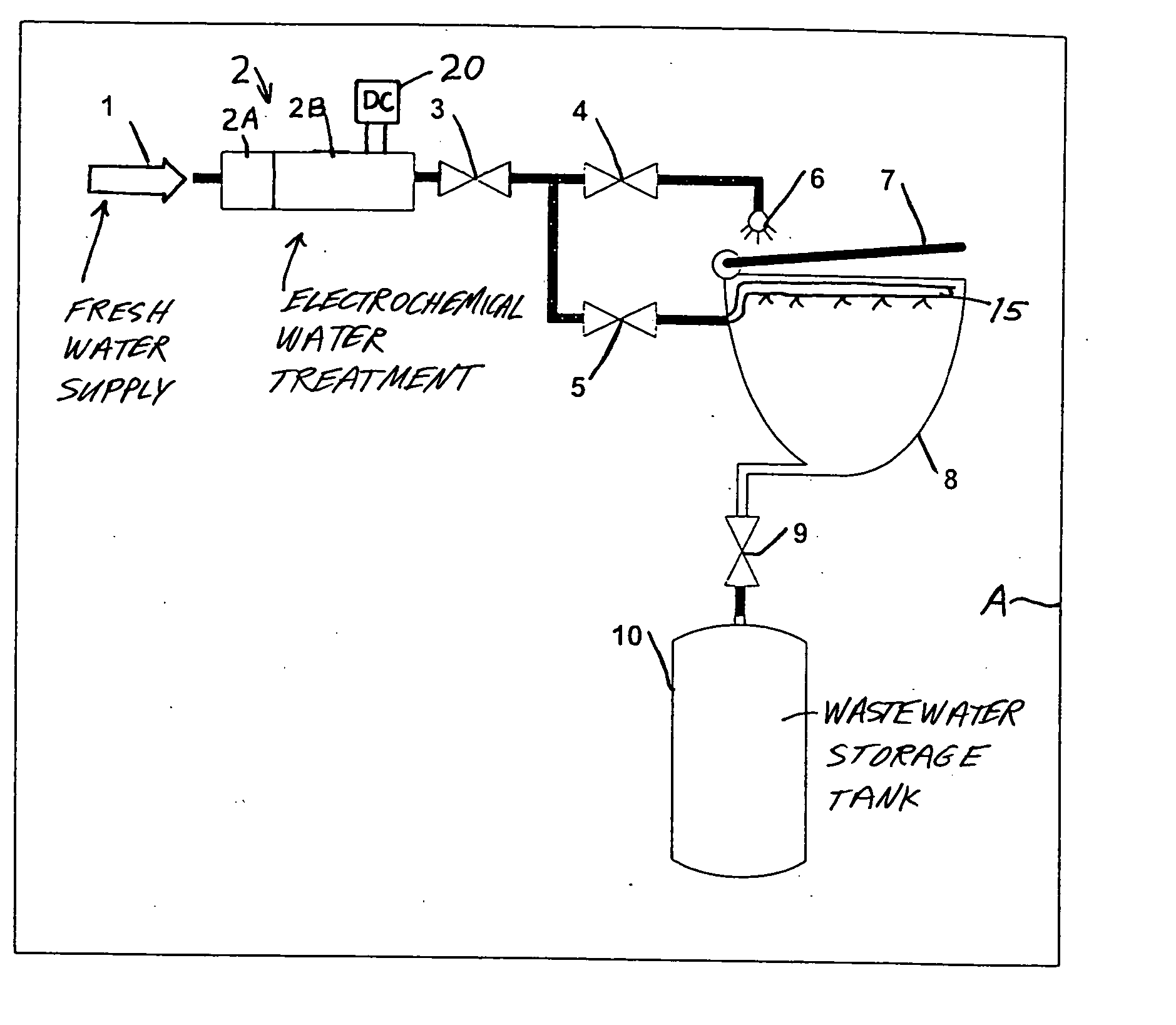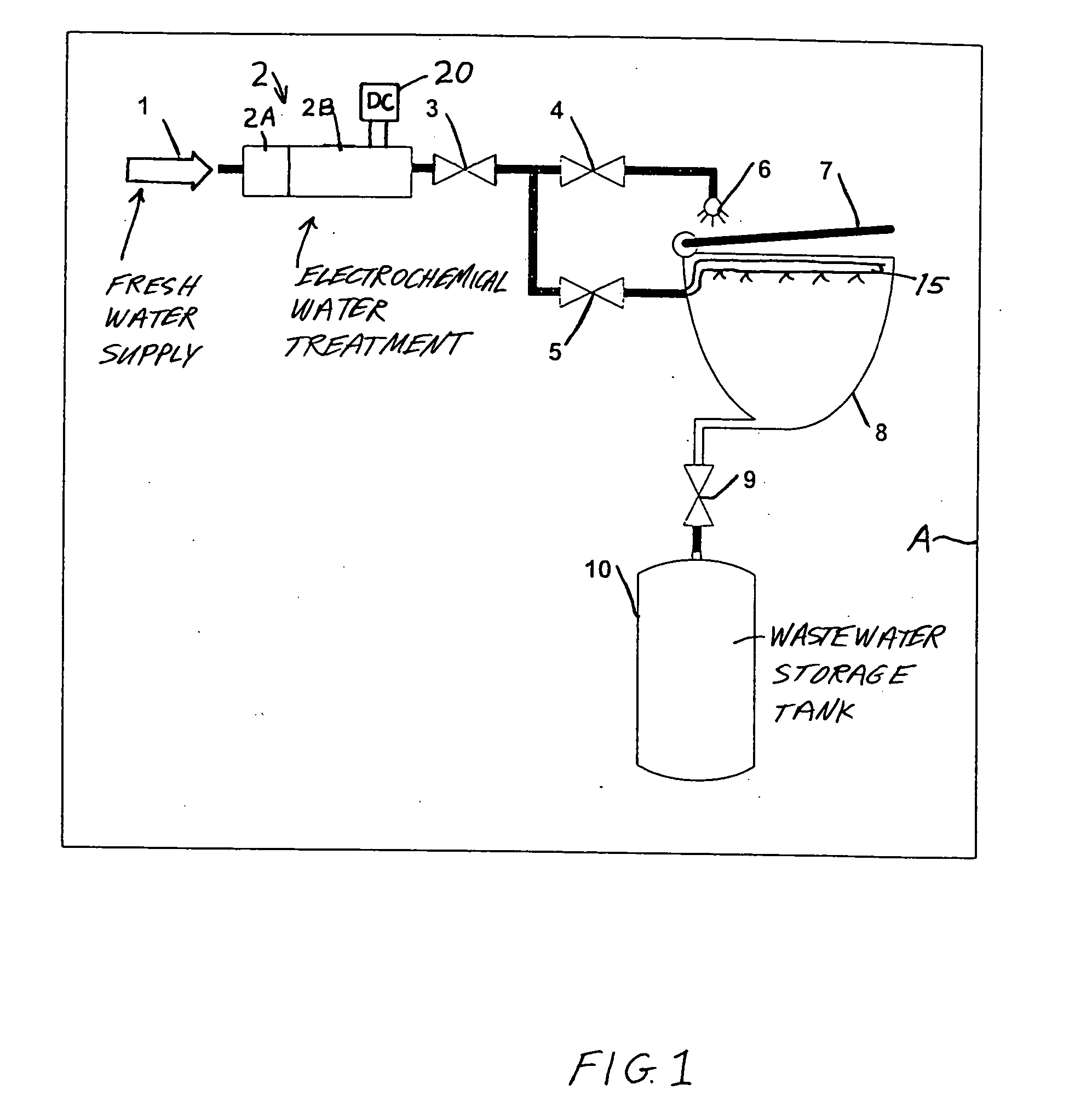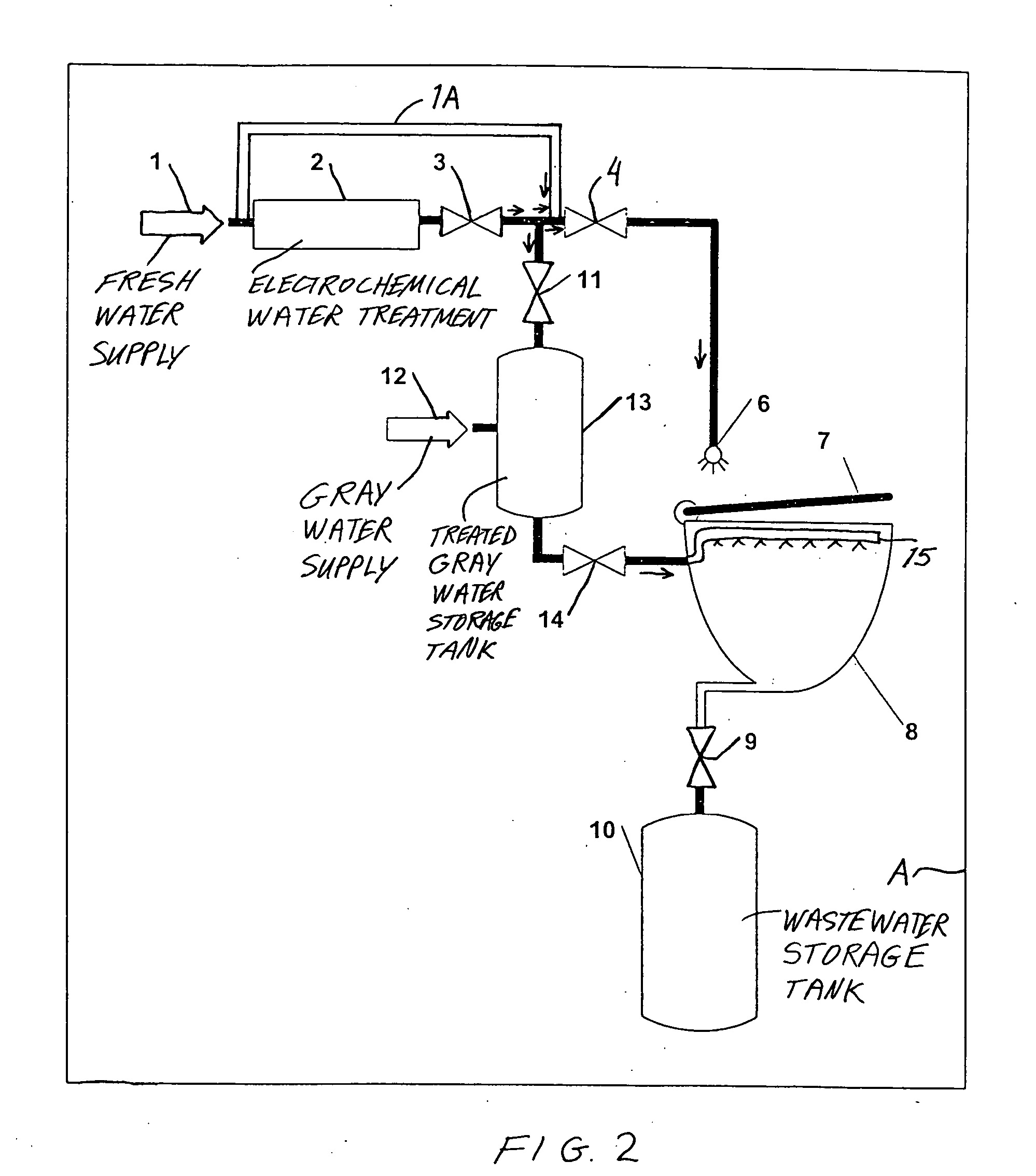Method and apparatus for cleaning and disinfecting a toilet system in a transport vehicle such as a passenger aircraft
a technology for transport vehicles and toilets, applied in the field of passenger transport vehicles, can solve the problems of odor problems, water considered biologically contaminated and hazardous, and contaminated water,
- Summary
- Abstract
- Description
- Claims
- Application Information
AI Technical Summary
Benefits of technology
Problems solved by technology
Method used
Image
Examples
Embodiment Construction
[0025] An example embodiment of the invention will be discussed in connection with a toilet system installed in an aircraft A, which is merely schematically indicated. The aircraft A can be any conventionally known passenger aircraft equipped with a toilet system. In this context, the toilet system includes a water supply 1 which may be a fresh potable water supply or a secondary use water supply or a graywater supply, a toilet bowl 8 including an associated or connected toilet seat 7 (i.e. a seat structure arranged over the toilet bowl and adapted to have a person sit thereon for using the toilet bowl), at least one water line connecting the water supply 1 to the toilet bowl 7 (throughout this application the terms pipe and line generally refer to any pipe, hose, waterline, conduit, channel, duct or any other liquid conveying pathway), and a wastewater storage tank 10 connected by a waste line to an outlet of the toilet bowl 8. The further improvement of such a toilet system accord...
PUM
| Property | Measurement | Unit |
|---|---|---|
| anti-adhesion properties | aaaaa | aaaaa |
| electrical conductivity | aaaaa | aaaaa |
| concentration | aaaaa | aaaaa |
Abstract
Description
Claims
Application Information
 Login to View More
Login to View More - R&D
- Intellectual Property
- Life Sciences
- Materials
- Tech Scout
- Unparalleled Data Quality
- Higher Quality Content
- 60% Fewer Hallucinations
Browse by: Latest US Patents, China's latest patents, Technical Efficacy Thesaurus, Application Domain, Technology Topic, Popular Technical Reports.
© 2025 PatSnap. All rights reserved.Legal|Privacy policy|Modern Slavery Act Transparency Statement|Sitemap|About US| Contact US: help@patsnap.com



